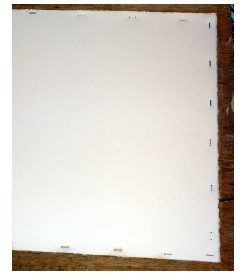While there is no set recipe to watercolor painting …
… there are a few practical considerations to take under advisement before you begin.
Also a logical order that should be followed to best ensure good results.
Begin by preparing your surface.
If you’re using cotton rag paper that isn’t attached to a watercolor block, you’ll need to stretch the paper.
Cut the paper to the desired size and soak it in water for ten to fifteen minutes (a bathtub works well for large pieces).
Let the excess water drip off, then fasten it to a piece of 1/4 inch plywood with staples about two to three inches apart all around the edge.
Let the paper dry completely and then draw your picture. Your lines should be kept light, and erasing on the watercolor surface should be limited, as it can mar the tooth of the paper.
You may even want to draw on a separate sheet of paper and use graphite transfer paper to move it to the watercolor paper.
When you’re satisfied with the drawing, mask areas that need to be kept white.
If you’re painting an object with a background, you may need to preserve the object with frisket film or masking fluid so you can paint the background freely right over the top.
Small areas such as highlights in the eyes, bright patches of sunlight, and so on can also be protected with masking fluid.
Let the fluid dry completely before painting.
Begin painting with large washes of local color (or, the color that an object appears to be) using the largest flat brush possible to lay in even tone; round brushes are for detail work.
While the paint is still wet, drop in accent colors to add depth and more visual interest to your work.
Work from back to front, beginning with the background and ending with objects in the foreground.
When the initial wash of color has dried, add a layer of shadow color. See the shadows as large, well-defined shapes, and link smaller shapes into the larger ones.
You may choose to vary the edge quality by softening some lines and keeping others dark, but the overall shape should remain crisp.
Finish with detail work in the foreground. Avoid placing details in places where you should not be able to see them, such as areas that are far away, in bright light, or dark shadow.
Remember that less is more, and while a few details will raise your work to a professional quality, too many details will make the painting tiresome and overworked
With these simple step by step watercolor drawing lessons … you’ll be able to master water color paintings in record time. This is regardless of your previous experience.
With high definition videos and detailed PDF material on watercolor, you will have all the information you need to bring your watercolor paintings to life.



